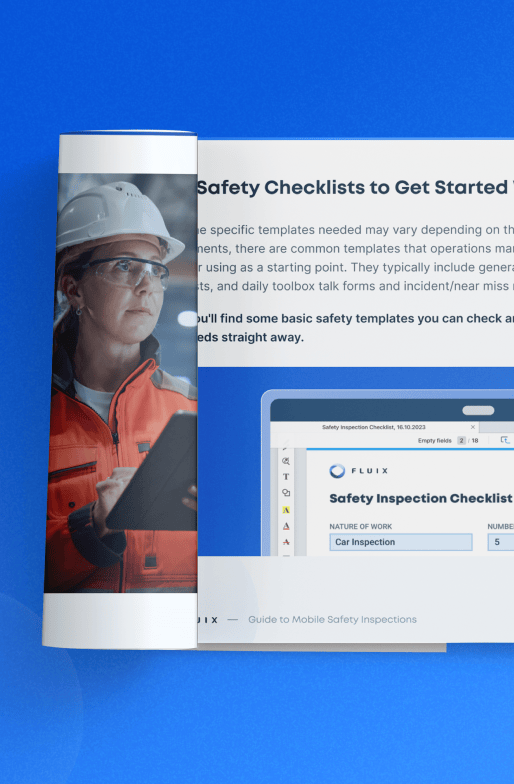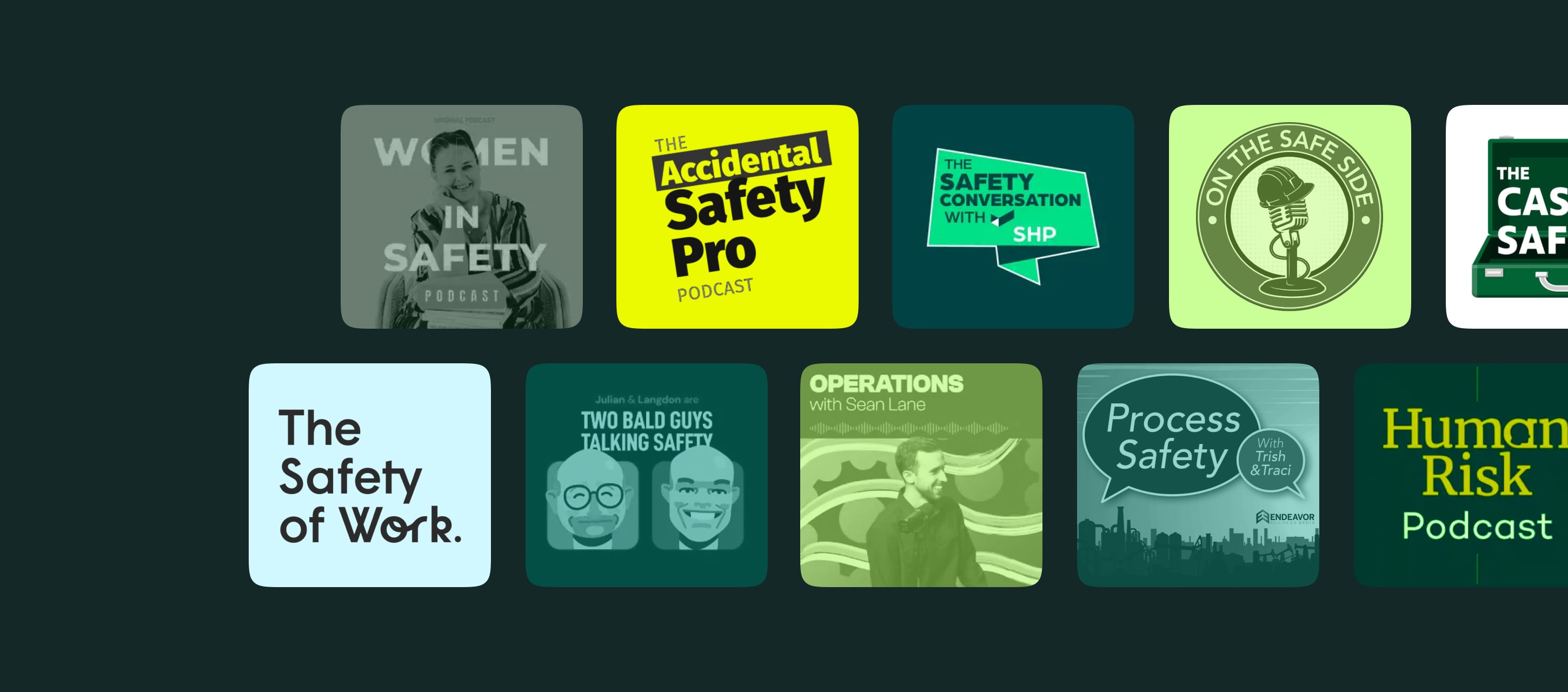In 2022, the total recordable cases of nonfatal workplace injuries and illnesses in the U.S. stood at 2,804,200, and the total for fatal work-related injuries was 5,486. Both numbers represent an increase from 2021 data.
Artificial intelligence (AI) in safety design and management aims to reduce those numbers by limiting human error and improving analytics.
Still, AI in safety is relatively new, so should you wait for a few more years or is it worth the investment right now?
Contents:
Is AI in Safety Management Applicable?
AI is a tool that excels at analyzing massive datasets, showing patterns and insights otherwise left undercovered.
When it comes to safety management, it can be good at transforming traditional approaches, with its abilities to process information beyond human limitations.
The Data-Driven Approach
AI’s approach to data-driven safety is a fundamental shift in how organizations address workplace hazards. Traditionally, safety management relied heavily on past experiences, human observations, and intuition. While being valuable, these tools aren’t the most reliable.
But now, AI unlocks a new level of analysis, real-time and historical. It can comb through massive amounts of data from incident reports, cameras, and sensors.
With incident reports, the AI can analyze details about past incidents to pinpoint recurring patterns, root causes, and high-risk areas. On top of that, through sensors, AI can provide real-time readings about environmental conditions, equipment, and wearables, revealing anomalies that might indicate developing problems.
And AI-powered cameras can tirelessly analyze footage to detect unsafe behaviors, like the improper use of PPE or near-misses.
By analyzing all this data, AI systems can predict potential hazards, identify hidden trends, and recommend proactive safety measures. Imagine how much more effective your safety measures could be with these advanced insights.
Beyond Human Limitations
Only a few years ago, AI in safety systems and programs was a pipe dream. Now, it can play a critical role in reducing human error and exceeding worker limitations. Humans are prone to fatigue, distractions, and biases — factors that can lead to oversights and misjudgments. AI doesn’t combat the same difficulties.
An AI-powered system has an untiring vigilance that is impossible for people. It can accurately monitor a workplace 24/7, analyzing data and identifying potential hazards without needing breaks or shift changes. This constant vigilance makes one wonder: what would be the benefits of having a tool that never tires or loses focus?
By augmenting human abilities, AI acts as a safety net, significantly reducing the likelihood of accidents caused by human error. Through pattern recognition and unflinching real-time analysis, AI can create a safety culture and reduce the stress and load on individual safety workers and teams.
Learn More Learn More Going digital slashed Centuri’s reporting time by 50 – 75% annually
Examples of Using AI in Safety Programs
Predictive analytics uses historical data, statistical algorithms, and machine learning to predict the likelihood of future outcomes.
AI is transforming workplace safety in diverse ways, from predicting potential hazards to monitoring workers in real-time. The best way to understand these changes is by reviewing several practical examples of use cases.
Hazard Prediction
Using data-driven insights and predictive analytics, AI can enhance hazard predictions beyond the conventional methods of analyzing past incidents and performing manual inspections.
AI’s ability to assess and review vast datasets, including incident reports, sensor readings, maintenance logs, and camera feeds, allows it to find correlations that humans might miss. These hidden patterns might reveal equipment failures that occur after specific maintenance cycles or weather conditions that increase the likelihood of certain accidents.
By integrating and combining information from diverse datasets, AI can create a more comprehensive picture of potential risks.
Also, by continuously gathering new data, the system can adjust predictions in real time, ensuring safety strategies stay ahead of evolving hazards. These insights empower safety professionals to address hazards practively, creating a safer workplace for everyone.
Real-Time Monitoring
Real-time monitoring powered by AI in safety management is like having a permanent on-site safety supervisor with superhuman perception. AI monitoring uses a combination of smart cameras, wearable sensors, and environmental sensors to establish a real-time dashboard of potential safety hazards, combining all monitored data for a thorough safety picture of the entire workplace.
AI-powered cameras can analyze video feeds and detect unsafe acts, such as employees entering restricted zones or operating equipment incorrectly. The devices can also learn to recognize signs of worker fatigue or distraction that can lead to accidents.
Wearable sensors connected to an AI system can monitor worker vitals like heart rate and body temperature. The devices can alert critical safety personnel to potential heat stress or other health risks. Some sensors can detect sudden falls or impacts, indicating a possible injury and signaling an emergency response.
Environmental sensors can monitor air quality, gas levels, noise, and vibrations. Depending on preset thresholds, the AI system can alert safety management, allowing swift intervention. As software for safety, AI can combine information from all real-time sensors to communicate an accurate and thorough safety response.
Equipment Maintenance
Using AI in awareness in safety programs is about more than making a facility less hazardous for workers; it is also about improving functionality and productivity.
AI-driven predictive maintenance uses equipment sensors to monitor maintenance schedules and repairs in vital machinery. The sensors are similar to having a 24/7 on-site engineer or maintenance technician for each machine or piece of equipment.
The sensors analyze hidden wear and tear, predict failure points, and prioritize essential maintenance and repairs. AI systems help maximize resource allocation, preventing the unnecessary stockpiling of parts and avoiding overspending, which is common with preventive maintenance programs.
Overall, AI-powered equipment maintenance reduces unplanned downtime, lowers repair costs, and can extend the lifespan of assets. It’s a game-changer, ensuring equipment reliability and supporting working safety by preventing accidents caused by malfunctions.
The Ultimate Guide
to Safety Inspections
Checklists, tools, and best practices to help you meet the safety regulations


Potential Challenges and Considerations
While AI in safety programs holds incredible potential value, it is not without its challenges. It’s essential to approach AI workplace safety implementation with a clear understanding of possible risks and considerations.
Data Quality and Bias
AI is not a solution for poor data collection methods. If safety communication or data collected during safety walks does not provide clean and polished datasets, AI outputs will be affected.
AI models are only as good as the information they use, so if the inputs are inaccurate, incomplete, or biased, the outputs will be of the same poor quality. A reliable AI system depends on high-quality data that actively addresses biases and other issues.
Ethical Concerns
Whether you use AI currently or not, it will eventually play a role in the safety decisions of most organizations. Companies shouldn’t implement the technology without considering potential ethical challenges regarding worker privacy, erosion of human judgment, and racial or discriminatory biases.
Despite the phrase artificial intelligence, AI systems are not sentient. Businesses may disproportionately rely on AI in safety and organizational management, resulting in lax oversight and vulnerability to liability issues and lawsuits.
Technological Integration
Integrating AI safety systems might require updates to existing infrastructure or changes in data collection and storage. Seamlessly integrating new technologies with legacy systems is essential for maximizing the benefits of AI without creating further complexity. Before installing or investing in AI tools, consider integration strategies and ensure compatibility with existing systems.
Workplace Disruptions
As you begin to work with AI tools and systems, you should expect temporary workflow disruptions. Workers need to adapt to new procedures and interfaces. Careful planning, training, and support during transition phases are essential to minimizing disruptions and ensuring the successful adoption of AI technologies.
Evaluating the Cost-Benefit of AI in Safety
AI safety solutions promise impressive capabilities, but how do those capabilities translate to real-world benefits? Implementing AI technology requires investment, both in terms of technology and potential adjustments to workflow. Do the potential long-term benefits or promises of AI integration outweigh the initial challenges and costs?
Cost Versus Benefit
The initial investment in AI safety systems can make some executives anxious. While AI tools and systems are expensive and present some challenges and possible flow disruptions, focusing only on the price tag and potential challenges obscures the long-term benefits.
AI safety systems reduce accidents, which can lower insurance premiums, limit downtime, and protect a company’s reputation. AI also streamlines safety processes, freeing up resources for other business areas.
Companies can teach AI tools using the latest regulations and safety standards, ensuring compliance with OSHA regulations and other governing bodies. In case the term is new for you, OSHA stands for the Occupational Safety and Health Administration, a U.S. government agency that sets and enforces workplace safety and health standards.
Through compliance practices and proactive hazard identification, AI can improve safety culture, increase productivity, and improve employee morale, especially if you team it up with dedicated software for safety management professionals.
Ultimately, the cost of inaction — the potential for accidents and their associated expenses — often outweighs the initial and ongoing investment in AI-powered safety.
Leading Safety Management Modernization with Fluix
Although there are still discussions around AI in safety, it’s clear that this technology will be bringing transformative potential into the field.
However, your modernization effort can be more diverse. Fluix can provide digital transformation tools that would enhance efficiency and ensure compliance without the need for AI.
Fluix is workflow automation software that offers much functionality for safety management, including digital documentation, automated workflows, reports and integrations with other systems. It empowers organizations in regulated industries such as construction, energy, and aviation to streamline operations, reduce manual errors, and maintain high safety standards.
By integrating Fluix into your safety management practices, you can create a safer and more efficient workplace for your teams. And ensuring your business is resilient and compliant.







